If you are a newcomer to the world of CFDs and online trading you have come to the right place. If you are a seasoned trader in the field, this might not be for you, because this article is an introduction to CFDs and CFD trading.
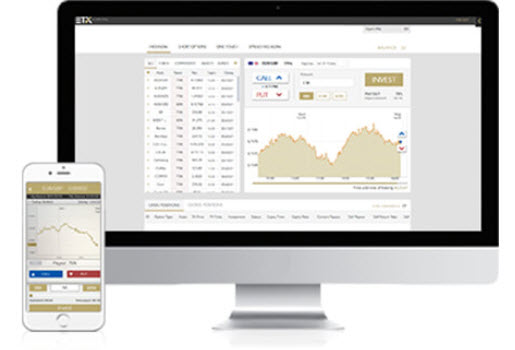
You might have heard the term CFD being thrown around online here and there, but never truly understood what it is about. The acronym stands for “Contract for Difference”, which in itself might not be that helpful. What lies under the terminology is the ability to make a contract with a broker, such as ETX capital or IC markets, according to which you take on the risk of difference for the duration of the contract. In essence, the CFD is a type of derivative, and just like other derivatives it will be based on the movement of something else, e.g. the price of a stock, a commodity, or an index.
Example: If you believe that the market price for gold will be going up, you select the right type of gold CFD (price movement up), time frame, and how much money to risk on the trade. If the gold price rises, you, the trader, gets the profit, and if it falls you cover the losses.
It is important to understand the underlying asset is never traded, but that the CFD just make you able to speculate on the asset price in question. You will never own any of the assets you are gaining exposure to.
To further clear up the concept of CFD trading let us run through another example. You go select a share that you want exposure to and the price for this share is right now $10. You initiate a CFD trade of 50 shares. This exposure, if achieved buy actually purchasing shares, would require a $500 investment, plus fees. This is where CFD will differ significantly, as CFD brokers offer leverage. Leverage means that you borrow money from your broker for the trade, only using a smaller amount of money from your trading account. If your CFD broker is offering leverage at a 5% margin, you will only need $25 from your trading account to gain exposure to the 50 shares. (Five percent of $500 is $25.)
Available margins and leverages will vary depending on both the chosen CFD brokerage firm and the underlying assets. For retail traders (non-professional traders), there may also be legal caps in place, to prevent retail traders from using too much leverage.
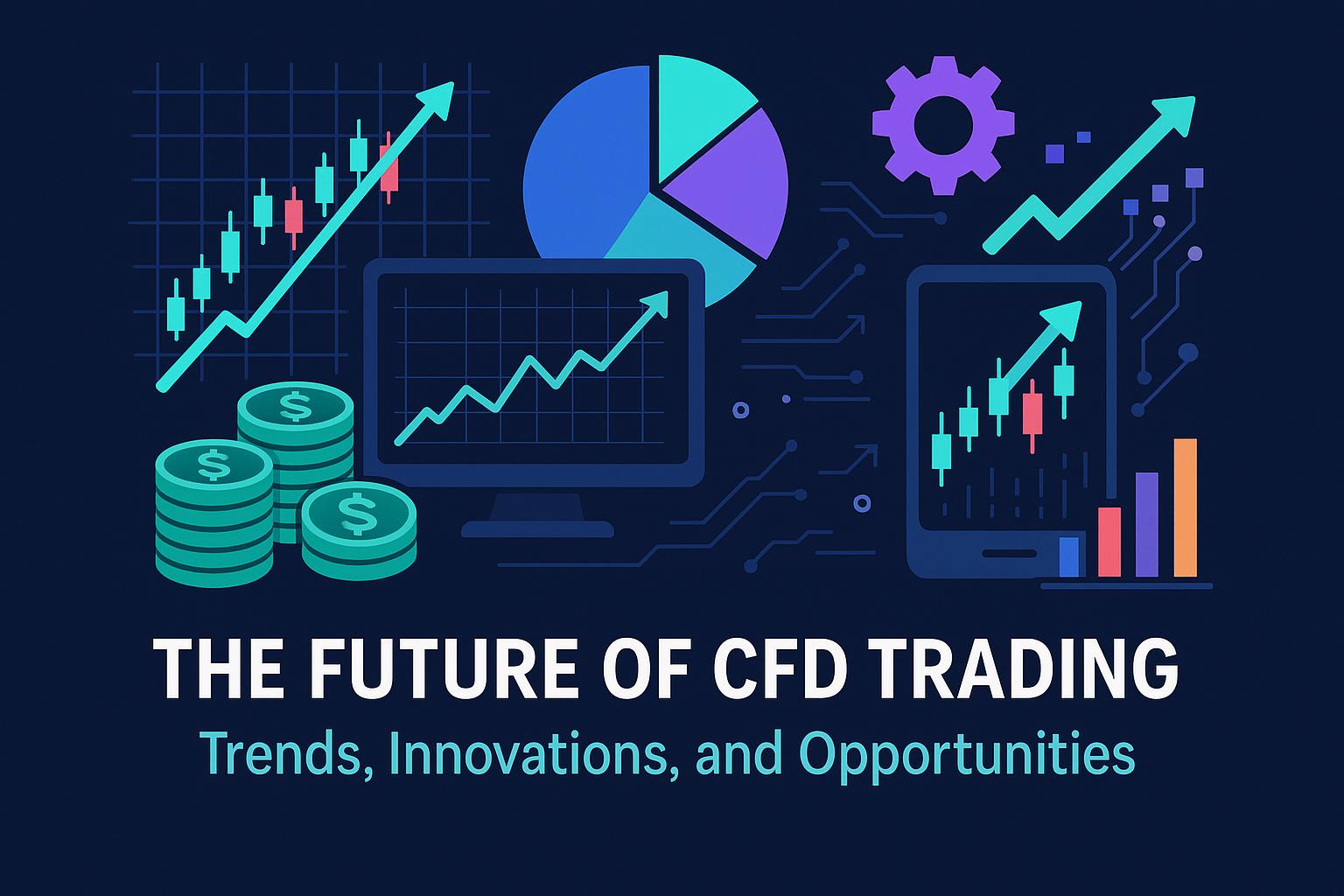
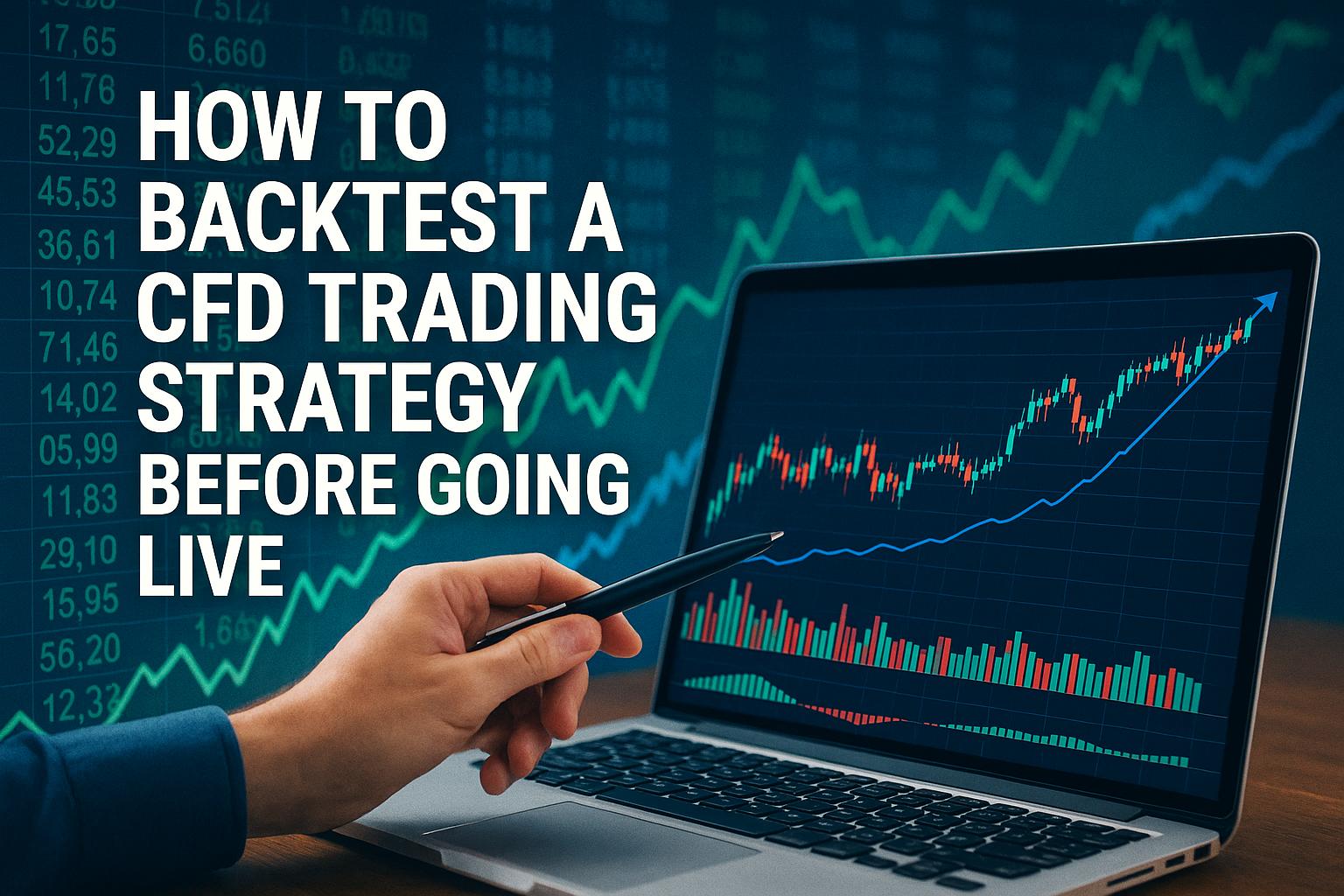
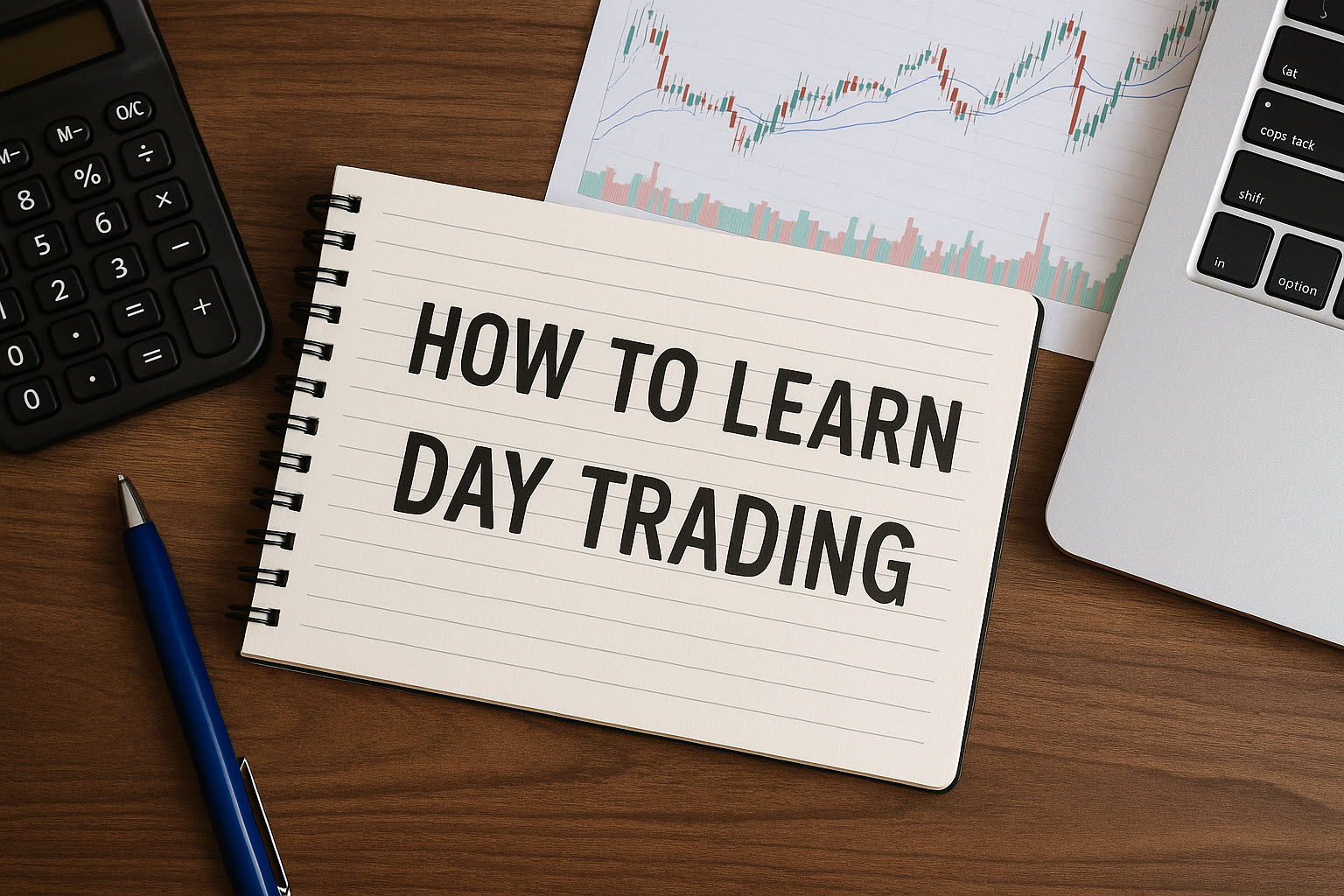
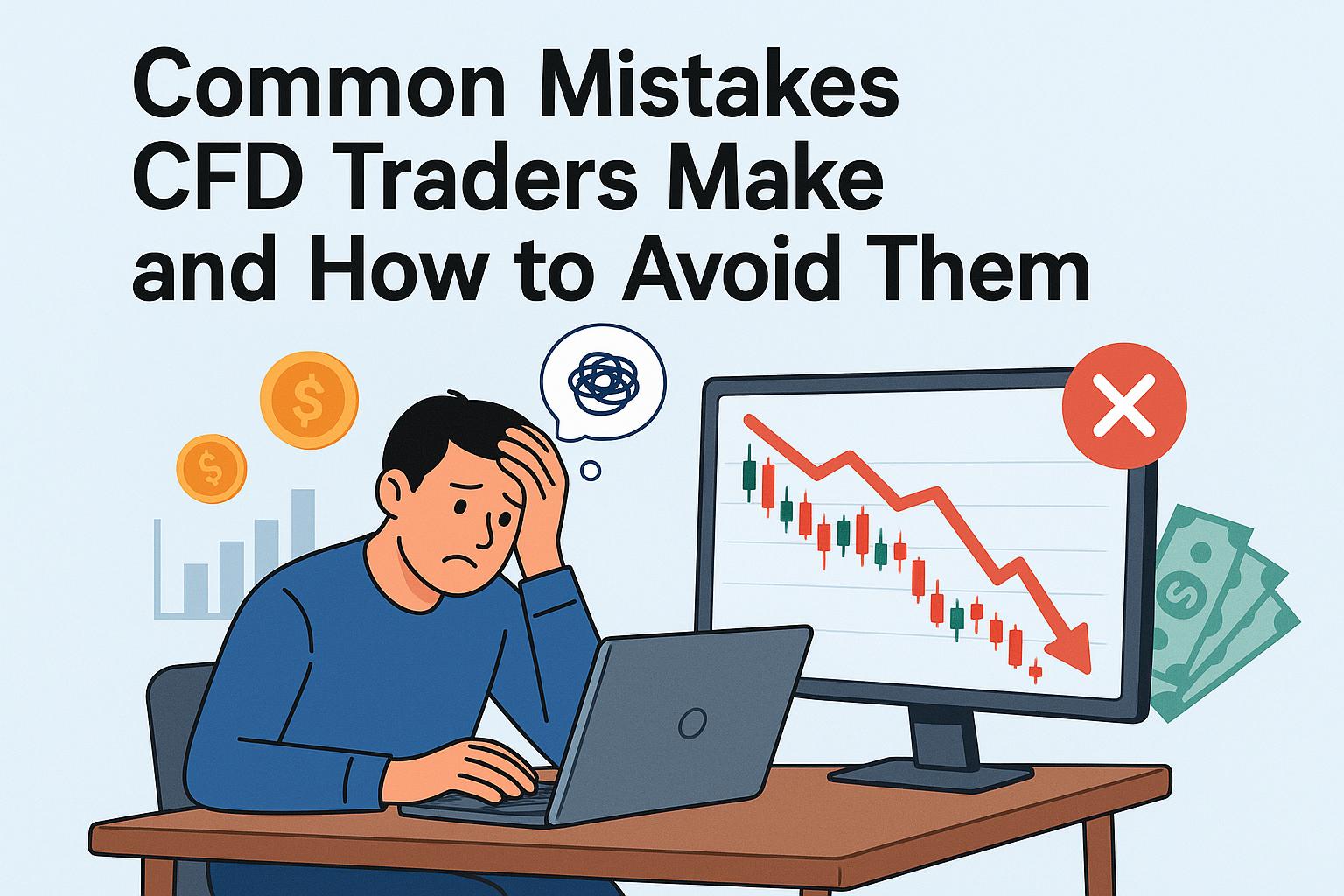




When a CFD is opened up your initial position starts on a loss. The loss will be tied up to the spread of the traded asset. In other words, if you trade on an asset where the broker offers up a spread of 15 cents, for you not to lose anything on this trade the asset need to go up at least 15 cents.
Now we will examine the return compared to conventional stock trading relating it to the already used example. So let’s imagine that the asset traded above is a stock of some kind and that the price of that just went up from $10 to $20. If you were a conventional stock trader you would now have doubled your investment value, from $500 to $1000, a profit of $500 (minus fees).
This is where it gets interesting. With a CFD you are getting the difference from when you entered a trade, which is still $500, but with CFDs, your initial money up front was only $25 and not $500. So when calculating your profit contra investment in percentage, you make a lot larger profit. But in the same way as your percent wise profits will be bigger, so will your losses. Using leverage will amplify both profits and losses, and it is important that you have a solid risk management strategy in place.
CFDs are chiefly used by day traders. If you want to holds positions open for more than one trading day, other solutions may be more suitable. This is also why CFD trading is usually done on fast changing and very liquid markets such as Forex, Energy Commodities and Cryptocurrencies.
Contract for Difference (CFD) trading offers a versatile way to speculate on the price movements of a wide range of financial assets without owning the underlying instruments. This flexibility allows traders to diversify their portfolios and access global markets with ease.
Here are some examples of financial assets you can gain exposure to using CFDs:
Forex, or foreign exchange, is one of the most popular markets for CFD trading. Traders speculate on the price movements of currency pairs, such as EUR/USD, GBP/USD, or USD/JPY. Forex CFDs allow you to trade both major pairs like USD/EUR, minor pairs, and exotic pairs involving less commonly traded currencies. The forex market operates 24 hours a day, five days a week, offering ample opportunities for traders.
CFDs on stocks enable traders to speculate on the price movements of individual company shares without owning them. This allows traders to profit from both rising and falling stock prices without resorting to risky short-selling of shares. Popular options include shares of companies listed on global exchanges like the NASDAQ, NYSE, or FTSE.
Using a CFD instead of buying the shares outright have several advantages, including:
The Class A shares of Berkshire Hathaway. At the time of writing, NYSE: BRK.A is trading above $700,000 per share.
If you want to invest in the Swiss chocolatier Chocoladefabriken Lindt & Sprüngli AG, you currently need to pay over 123,000 CHF per share, and that equals 139,000+ USD.
The homebuilder NVR, who also offers mortgage loans and title insurance, is currently trading at above 9,000 USD at the New York Stock Exchange.
CFDs makes it easy to speculate on indices, including well known stock indices such as S&P 500, NASDAQ 100, FTSE 100, and DAX 40. This allows you to speculate on the performance of entire stock markets, or company categories, rather than individual stocks. A stock index represents the value of a group of stocks from a particular market or sector, and index CFDs are popular among traders looking to take a broad view of the market or hedge against risks in individual stocks.
Commodity CFDs cover a range of physical goods, including metals, energy products, and agricultural items. Using a CFD makes it easy to speculate on both rising and falling prices.
Examples of common underlying commodities for commodity CFDs:
Cryptocurrency CFDs have gained popularity as traders look to capitalize on the volatile price movements of digital currencies. CFDs based on Bitcoin (BTC), Ethereum (ETH), Ripple (XRP), or Litecoin (LTC) are among the most commonly traded cryptocurrency CFDs.
Unlike traditional cryptocurrency trading, CFD trading on cryptocurrencies allows traders to go long or short, profiting from both rising and falling prices.
The world of cryptocurrencies remains legally complex and many traders prefer to not actually purchase and own cryptocurrencies; they much rather use CFDs and other derivatives to gain exposure to the exchange rate movements.
CFDs on ETFs allow traders to speculate on the performance of Exchange-Traded Funds. This is funds where the shares are listed with an exchange, e.g. NYSE, and bought and sold in a manner very similar to stock trading. Having fund shares listed on an exchange makes transactions more streamlined and boosts liquidity.
There are many ETFs that track a basket of assets, such as stocks, bonds, or commodities. Popular ETFs include those that track indices like the S&P 500 or specific sectors like technology or clean energy. ETF CFDs can provide diversification in a single trade, making them an attractive option for many traders.
Bonds are another financial asset available for CFD trading, though they are less commonly traded compared to other instruments. With bond CFDs, traders can speculate on the price movements of government or corporate debt securities, such as US Treasury bonds or German Bunds. Bond CFDs are often used to hedge against economic uncertainties.

CFD trading allows access to diverse financial assets, making it a highly flexible tool for both hedging and speculative purposes. This diversity enables traders to engage in diversification, hedge existing positions, and take advantage of market trends across various sectors. By offering access to global markets and the ability to trade in both directions, CFDs are an appealing option for traders looking to take advantage of price movements across multiple asset classes.
Before diving in, it is important to learn the fundamentals of CFD trading, including how leverage, margin, and spreads work. Read up on key trading terms like stop-loss orders, take-profit orders, and lot sizes. Familiarize yourself with different markets and how they react to economic events and news.
You need to be knowledgeable enough to formulate a suitable trading plan and risk management strategy. Test run them using a free demo account with play-money, to see how they stack up against real market data. Make adjustments, but also learn about the risk of form-fitting.
A well-thought-out trading plan is essential for success, and your plan should include points such as your financial goals and risk tolerance, the markets you’ll trade and why, specific entry and exit strategies, and risk management rules, such as setting stop-loss levels to limit potential losses.
Another very important step is to select a broker that is reputable and suitable for your trading strategy and preferences. Below, we will go through a few points that can help guide you when it is time to chose a broker for your CFD trading.
Once you have your strategies in place and have picked a broker, it is time to practise using the trading platform in demo mode. With a demo account, you can learn more about how the platform works and get more comfortable with your strategies without risking any real money. Do not make your first deposit until you are ready.
Selecting the right Contract for Difference (CFD) broker is a critical decision for traders, as it directly affects their trading experience and success. With numerous brokers offering CFD trading, it’s essential to evaluate your options carefully to ensure the broker aligns with your trading goals, style, and preferences. It is also necessary to avoid fraudulent brokers and brokers with poor routines for trader protection.
This article provides a structured guide on the key factors to consider when choosing a CFD broker.
A CFD broker is normally both your broker and your counterpart in each trade. You are not purchasing stocks from another trader – you are entering into a contract with your broker as your counterpart.
This automatically creates a conflict of interest, as your broker will profit when you are wrong and be forced to pay you when you are right. Serious brokers can handle this conflict of interest, but there are also shady brokers out there that will engage in fraudulent practises to make sure they stay profitable. It is for instance very easy for a dishonest broker to manipulate the prices displayed by the trading platform now and then, to ensure that you lose that big trade. If they are only doing it now and then, the frauds can go undetected for a long time, with traders believing they are losing trades fair and square.
It is always important to pick a trustworthy broker, but it becomes even more important when this conflict of interest exist.
One of the first factors to consider when selecting a CFD broker is their regulatory status. A broker regulated by a strict financial authority will be required to adhere to strict standards designed to protect traders, e.g. when it comes to transparency, book keeping, security, and keeping client funds segregated. Authorities with strong trader protection will typically also make it easy for traders to report issues directly to them, and there might be a centre for conflict resolution available that is more accessible for the average trader than taking on a full-blown court case against a broker.
Examples of trusted regulatory bodies:
The safest course of action is normally to pick a broker that is authorized and overseen by the financial authority in your country, because then you don´t have to juggle several jurisdictions if an issue arises. If your country does not license online CFD brokers, or if the domestic authority is not known for providing good trader protection, another option is to pick a foreign brokerage firm licensed by a reputable financial authority. That authority will not be able to intervene directly in your country, but the broker still has certain incentives to behave properly to traders abroad to keep their good reputation and standing with the authority untarnished.
When a broker claims to be licensed by a certain financial authority, always confirm directly with the authority. It is easy for fraudsters to make any wild claim on their own sites or hide behind a license that is not longer active. Many financial authorities keep current lists of license holders on their official site, or will respond to email questions about brokers.
The trading platform is your gateway to the markets, so it should be user-friendly, reliable, and equipped with features that meet your needs. Some CFD brokers have their own proprietary platforms, while others will give you access to one or more independent platforms, e.g cTrader, MetaTrader 4 (MT4), and MetaTrader 5 (MT5).
Key features to look for include:
A platform that is stable, fast, and customizable can significantly enhance your trading experience.
It is of course important that the broker offers CFDs that are suitable for you trading style, e.g. when it comes to underlying assets and available time frames.
Even though it is important to not spread yourself too thin when you first get started with CFD trading, you also want to keep the option of diversifying more as you become more skilled. It can therefore be a good idea to pick a broker that gives your access to a diverse range of markets, allowing you to trade various assets. This may include forex pairs, stocks, indices, commodities like gold and oil, and even cryptocurrencies. Having a wide selection enables you to diversify your trades, reducing risk and increasing opportunities.
Check whether the broker provides markets that align with your interests and strategies. For example, if you’re focused on forex trading, ensure the broker offers an ample selection of major, minor, and exotic currency pairs.
Understanding the costs associated with trading is crucial. CFD trading can cost you in the form of spreads, commissions, overnight financing costs, transfer costs, and miscellaneous fees.
Compare the fee structures of different brokers and choose one that offers competitive rates and is transparent about the fees. Low fees can have a significant impact on your profitability for active CFD traders.
Leverage is a key feature of CFD trading, allowing you to control larger positions with a smaller capital investment. Different brokers offer varying leverage ratios, depending on the asset class and regulatory guidelines.
Ensure the broker provides leverage levels that align with your risk tolerance and trading plan. Additionally, check the margin requirements to understand how much capital you need to open and maintain positions.
While leverage will amplify profits, it also amplify losses. It is important to have a good risk management plan in place that takes leverage into consideration.
Many of the stricter financial authorities have caps in place to limit how much leverage a broker is permitted to give to a non-professional trader (retail trader). They can also require Negative Account Balance Protection for non-professional accounts, which changes the dynamic. If you have Negative Account Balance Protection, make sure you understand how it works and in which situations your broker will automatically close your positions.
Responsive and knowledgeable customer support is essential, especially for new traders who may need assistance with account setup, platform navigation, or resolving issues. Look for brokers that offer multiple support channels, such as live chat, email, and phone, and ensure their support team is available during your normal trading hours. In the fast-paced world of CFD trading, you may need real-time assistance immediately when an issue arises. Running into trouble and realizing that no help is available until Monday morning Sydney time is not a good experience.
Phone support and live chat can offer real-time help, while email support tends to be slower.
If you prefer phone support over live chat support, make sure you pick a broker where you don´t have to make a potentially costly phone call to a foreign country to reach the support. Brokers can for instance offer a local phone number, an international free-phone number, online phone support over the internet, or a call-back service.
Many brokers provide educational resources, including tutorials, webinars, and market analysis, to help traders improve their skills. If you’re new to CFD trading, a broker with strong educational offerings can be particularly valuable.
We do not recommend, however, that you get all your information and trading education from one source only, no matter how great your broker is. It is a good habit to always look for information from more than one source and evaluate it with a critical eye. Many of the long-term successful traders have a habit of obtaining information from various sources to paint a fuller picture.
Ease of funding your account and withdrawing profits is another important consideration. Make sure the broker accepts a transfer method that you are comfortable with and that will not add undue costs to the transfers for you.
It is common for CFD brokers to accept a variety of transaction methods, including bank transfers, credit cards, and e-wallets. Some even accept cryptocurrency transfers, but this is much more unusual.
Ensure there are no excessive fees for deposits or withdrawals.
Check if the broker has a bad reputation for being slow when it comes to processing withdrawal requests.
A broker that offer transfers and accounts in your native currency can help avoid conversion fees and that type of currency risk. Some only accept the transfers, so check if the money will actually be held in your account in your native currency, or if it will be automatically converted to a major currency (e.g. USD or EUR).
Researching a CFD broker’s reputation can provide insights into their reliability and customer satisfaction. Look for online reviews, testimonials, and trader feedback to gauge the broker’s track record. While no CFD broker is immune to negative reviews, consistent complaints about withdrawal issues, poor customer support, or platform instability are red flags. Be aware that some reviews may be fake; you need to look for patterns rather than focus on single reviews.
Before trading with real money, use a demo account to practice. Demo accounts allow you to simulate CFD trading in real market conditions using play-money. This is an excellent way to test your strategies and familiarize yourself with the trading platform without risking your capital.
Most of the serious CFD brokers offer demo accounts that you do not have to pay to get access to. This allows you to practice trading with free play-money without making a deposit first. Use this opportunity to test the platform and experiment with different strategies. A demo account provides a risk-free way to try the platform before committing real money.
Be suspicious of brokers that make it difficult for your to get access to a demo account. There are many great CFD brokers out there that will be happy to give you a free demo account without making you jump through hoops, so there is usually no reason to patronize those who refuse.
Examples of warning signals:
Once you’ve chosen a broker, sign up for a real-money trading account. Some brokers offer different types of real-money accounts tailored to different types of traders and trading strategies, so make sure you pick the best one.
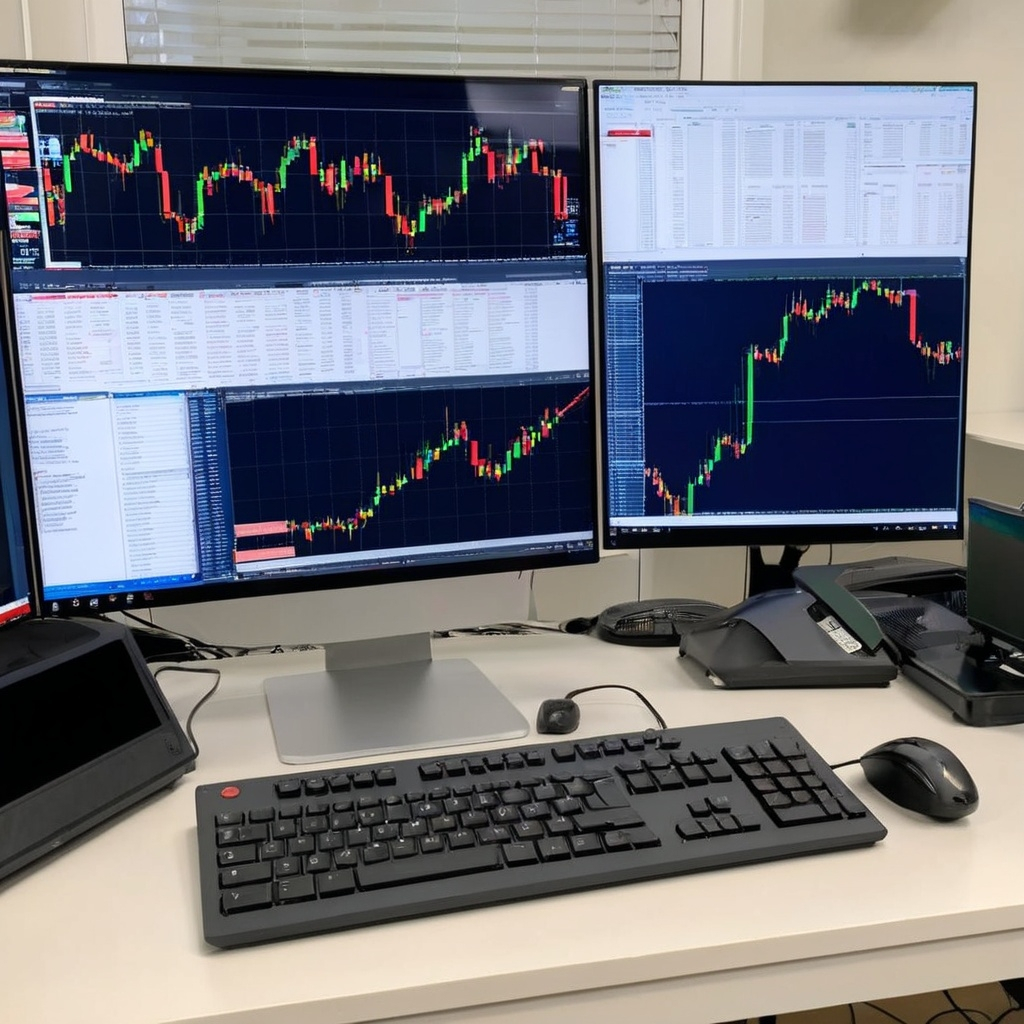
Before you can do real-money trading, you will need to deposit funds into your trading account. Many brokers offer a large selection of deposit options, including bank transfers, credit cards, and e-wallets. You will normally be required to use the same method for withdrawals as for your deposits.
Execute your trades according to your plan, and avoid making impulsive decisions driven by emotion. Only trade with money you can afford to lose, as CFD trading carries significant risk.Keep a trading journal to record your trades, including the rationale behind each decision, the outcome, and any lessons learned. Regularly review your performance to identify strengths, weaknesses, and areas for improvement.
CFD trading carries risks and the use of leverage adds an extra element of risk. Effective risk management is crucial to protect your capital and promote long-term success.
One key strategy is to never risk more than a small percentage of your trading account on a single trade. Many traders follow the 1% rule, risking a maximum of 1% of their account balance per trade.
You also need to decide how much of your trading account that will be permitted to be in open positions, combined, at any given moment.
Stop-loss orders and take-profit orders are another example of vital risk management tools.
Profits from CFD trading are subject to taxation in most countries. In some jurisdictions, CFD profits are treated as capital gains, while in others they may be classified as income. This can also depend on your specific situation, so make sure you do your research in advance and consult with the tax agency if needed.
It’s important to keep detailed records of your trades and you may also need to consult a tax professional to understand your obligations and optimize your tax strategy.
CFD trading offers several benefits, including the ability to trade on margin, access to a wide range of markets, and the flexibility to profit in both rising and falling markets. CFDs also provide access to global financial instruments, allowing traders to diversify their portfolios and explore opportunities across different regions and industries.
Despite its advantages, CFD trading is not without challenges. The use of leverage will amplify losses as well as gains, and market volatility can lead to sudden price movements that may catch a trader off guard and wipe out the bankroll. Emotional trading is another common pitfall, as fear and greed often lead to impulsive decisions, although this risk is definitely not unique to CFD trading.
As with any type of trading, it is important to consider the costs, such as spreads and overnight financing fees, which can accumulate over time and impact profitability.
A downside of CFD day trading is that you are not accumulating assets. You are not building a stock portfolio or becoming the owner of real estate that have a good chance of increasing in value over time and help you reach your financial goals for the future. With CFD day trading, it is all about quick profits. Therefore, a successful CFD trader should ideally set up a separate investment plan to ensure that some of the CFD profits are invested long-term in a suitable way, e.g. stocks, funds, or real estate.
Success in CFD trading requires discipline, continuous learning, and adaptability. Begin with a solid understanding of the basics, choose a reliable broker, and develop a trading plan tailored to your goals and risk tolerance. Stay informed about global market trends and regularly refine your strategies based on experience.
While the journey to becoming a successful CFD trader takes time and effort, the rewards—both financial and personal—can be significant. By approaching the market with knowledge, caution, and a long-term perspective, you can unlock the potential of CFD trading as a valuable tool for building your financial future.
This article was last updated on: March 10, 2025